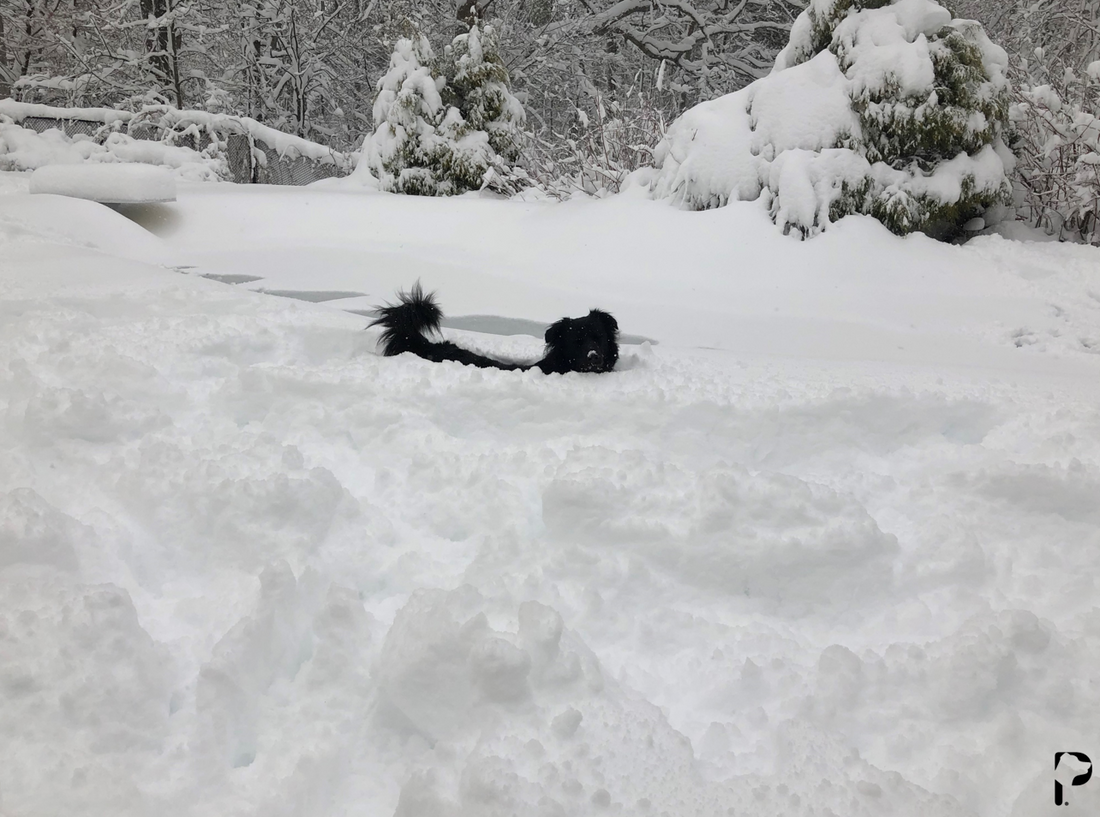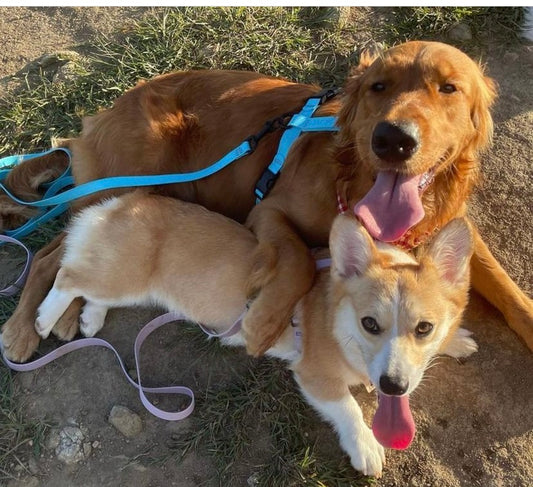
If your pups are anything like ours, they love playing in the snow (as you can see in the picture above of our dog Bella). But we always want to make sure they are safe when we take them outside in the colder temperatures. We compiled a list of 10 things to do/look for when taking your pup on a walk or are playing outside in the freezing temps. Please note: Each dog is different, and your dog’s breed can help you estimate their tolerance for snow and freezing weather (i.e., Huskies and Samoyeds probably can last longer in the snow/colder temperatures than a smaller dog with less fur). But these are the most common tips we found that can be relevant to your pups when going for a stroll in the wintertime:
1. Keep your dog’s hair between their toes clipped
This was a top tip we found. The reason being ice can accumulate on the hairs between toes making it harder for dogs to walk. Your pups will be more comfortable walking on colder, icy ground with their toe hairs trimmed.
2. Always wipe your dog’s paws when back inside
You want to make sure you wipe off any salt or chemicals their paws could have encountered while out on a walk. This is very important because these chemicals can be dangerous and toxic to dogs. You can use a warm, wet washcloth to wipe their paws.
3. Get booties
Many of us have seen those funny videos of dogs trying to walk with new booties (check one out here) and may have also experienced it with our own dogs, but if your pup will tolerate them then this is a safer way to walk in the snow. The booties protect their paws from cracking and prevents the ice from accumulating on their toe hairs. Booties also protect from salt and antifreeze chemicals on the street which can be toxic to dogs. Some of our followers also suggested getting socks with the booties, these are more comfortable for the pups and prevent rubbing, but this depends on your dog.
If they will not wear booties there are gels that you can get to coat the bottom of their paws. A popular one we found is “Musher’s Secret” gel that you can put on before going outside which protects their paws in the cold, but you must wipe your dog’s paws after a walk because you do not want them ingesting it and it can make tracks on your floor.
4. Use an effective leash & front clip harness – DO NOT use a retractable leash
A solid leash is important in freezing weather to help with control, especially if roads are slick. You do not want to use a retractable leash for this reason, the retractable leashes are harder to control, the thin chord can break or get wrapped around you or your dog and if that happens on slick ground it can cause falls and injury, the sudden jerk from the retractable leash can also cause your pup neck and spine injuries. A jogger leash that attaches around the waist is a safe option which allows you to have your hands free in case of slipping and will not come unhooked. Also, a front clip harness is ideal, it reduces pulling, helping to avoid slipping and sliding.
5. Get a sweater or jacket for your pup
Not all pups like wearing sweaters and jackets, but for puppies, elderly dogs, those with shorter hair or hairless and smaller breeds a jacket or sweater should be worn when outside in colder temperatures.
6. Moisturize paws
Once your pup’s paws are wiped off from outside you can use pet safe wax or conditioner to keep their paws from cracking. Make sure it is non-toxic and safe for dogs. A good go to we found mentioned on other sites is coconut oil. This is safe for dogs and has the benefits of vitamins and fats when ingested.
7. Short and sweet walks!
Again, this depends on the breed of your dog but, if temperatures are low, but above freezing you can limit your walks to about 30 minutes. If the temperature is below freezing you do not want to be outside too long. Make sure to keep an eye on your dog and look for any signs like picking up paws, whining, licking paws, and/or shivering. If you see your dog doing any of these, then you should take them home right away.
8. Don’t let your dog graze or eat things off the ground
As mentioned above, in the winter, harmful chemicals can be on the ground like antifreeze and other ice melting products that are toxic to dogs. Some suggest having your dog eat before you go out and/or bring some treats as a distraction to keep them from eating any salt /chemicals on the street.
9. Watch for frostbite
Frostbitten skin is hard, cold, and pale. It is most common on dog’s ears, tails, nose, and footpads. Keep an eye out for any signs of frostbite.
10. Walk in the day if possible
This will allow for warmer temperatures, and you will be more visible to traffic when walking which is a safer environment especially in a cold and snowy climate.
These are just a few helpful winter tips we found useful and wanted to share! Keep in mind these all depend on the breed of your pup and their tolerance for chilly weather. If you have your own winter tips, please share below. We would love to hear from you!
We hope you keep warm and have PAWesome adventures in the snow with your pups this winter!

References:
https://blog.homesalive.ca/dog-blog/tips-for-walking-your-dog-in-winter
https://topdogtips.com/walking-dogs-in-winter/
https://www.hillspet.com/dog-care/play-exercise/walking-dog-in-winter
http://www.vetstreet.com/our-pet-experts/8-steps-to-walking-the-dog-in-the-winter
https://www.mckinneyonline.com/other-news/7-dangers-of-retractable-leashes/
https://hartpets.org/10-reasons-not-to-use-a-retractable-leash/




